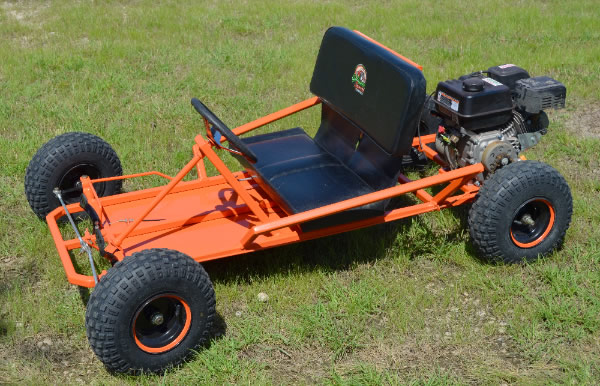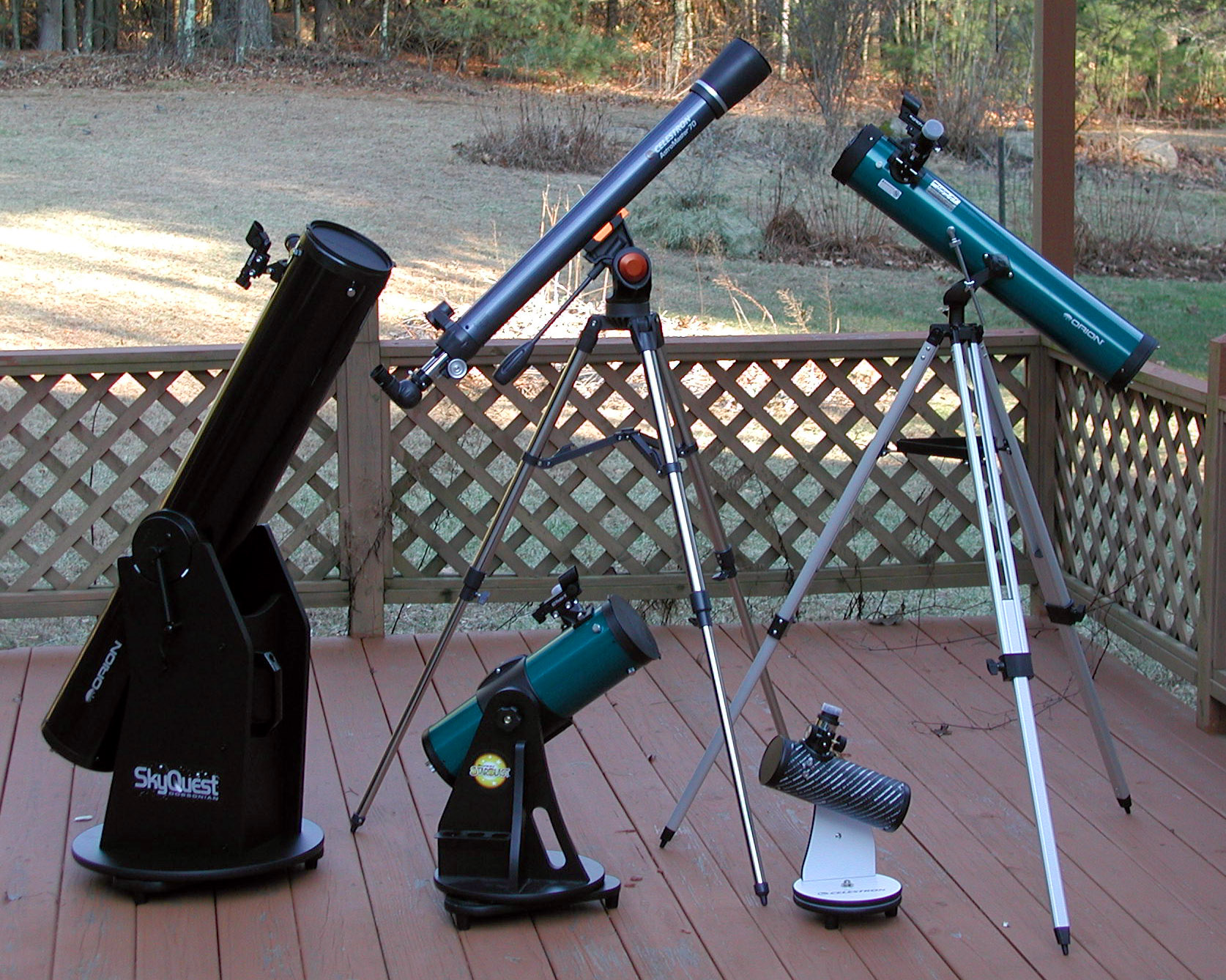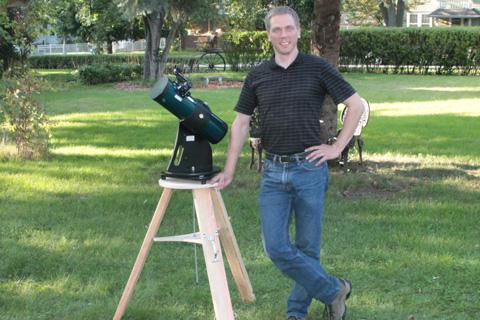
Louis D
-
Posts
9,363 -
Joined
-
Last visited
-
Days Won
1
Content Type
Profiles
Forums
Gallery
Events
Blogs
Posts posted by Louis D
-
-
5 hours ago, russ said:
I owned the Vixen 8-24 and Meade 8-24, both were good optically but not cheap.
Which ones? The Meade 8-24 is $64 at OPT while the Starguiders are $60 at Agena Astro. Pretty much the same price.
-
5 hours ago, Sonmalul said:
Then why do they still produce scopes in the f10+ range alongside their identical aperture and mechanics, faster brothers?
what's the catch?
Cost and level of correction. Since there are no regulations on minimum acceptable levels of optical correction and mechanical refinement for astronomical telescopes and mounts, manufacturers make everything from $25 toy telescopes with terrible optics and mechanics to multi-hundred thousand dollar scopes with excellent correction and superb mechanics. Imagine if there were no street regulations on cars. Manufacturers would be putting out dune-buggy type kits for street use powered by lawn mower engines side by side with luxury cars:

vs.

Just as you can't make a Bugatti for the cost of a go kart, you can't make a 12" APO for the cost of a 50mm department store telescope.
-
3 hours ago, Sweep said:
It is tiny, but perfectly formed.
I’m using in a 130mm Apo, and currently trying to decide whether to buy a 11” act or 10” classical cassegrain.
Edge of field not perfect on axis best of my collection, which include
Es 40mm 68
Es 30mm 82
Es 17mm 92
Es 12mm 92
Televue delete 7mm
Wo 4mm Uwan
Vixen 3.5mm ssw
Pretty much validates what I said about negative-positive designs not matching a purely positive design. Of that list, only the 40mm ES-68 is a purely positive design. I have the 40mm Meade 5000 SWA version of it, and it's not as sharp in the center as the even simpler 40mm Meade 5000 Plossl which is very sharp only in the inner 30 degrees. Another example is my 30mm Agena UWA 80 degree Wide Scan clone that is sharper in the center than my 30mm ES-82. However, it has field curvature and astigmatism outside the inner 40 degrees.
-
Besides a solar filter, the only other filter I use regularly is a 90s vintage Lumicon OIII filter. It can make all but invisible nebula obvious by blocking all light except a narrow notch around the OIII emission lines. Even though this image compares two OIII filters, one with a four times wider passband than the other, it demonstrates the difference I see between unfiltered and filtered views visually:

-
 1
1
-
-
You could also get a diagonal with a helical focuser for fine focus.
-
 1
1
-
-
On 24/05/2020 at 14:29, Sonmalul said:
So, ignoring abberations, and not taking into account eye relief so much, wouldn't the faster scope be almost as practical and easy on the eyes for high-ish magnifications as the slower, heavier, harder to mount in the wind scope?
Yes, you've basically derived why fast-ish ED and APO refractors are popular, and why big Dobs have gotten progressively faster and thus squatter. It also accounts for the popularity of specialty, short focal length eyepieces like the Vixen HRs and Tak TOEs to achieve high magnifications and small exit pupils while maintaining ease of use and high image quality.
-
12 hours ago, mih said:
Hi, I have a 6 inch Bresser Newtonian, 750mm focal length, f/5, 9mm and 25 eyepieces and a 2x barlow. Is that enough to do some deep sky observing? If yes, what deep space objects are there to view for me? If not, what should i upgrade?
There's plenty to be seen in a 6" telescope such as yours. As @Dr Strange suggests above, there's the Messier catalog for starters. There's also the Caldwell catalog which was compiled by Sir Patrick Alfred Caldwell-Moore for amateur astronomers to highlight many showpiece objects not listed in the Messier catalog.
-
 2
2
-
-
4 hours ago, Don Pensack said:
This is a function of design, The TeleVue Delites are designed to have a 1µ spot size on axis and 1.5µ at the edge of the field. Both figures are smaller than the Airy disc in amateur scopes.
And some positive-only eyepiece designs are horrible. So it's not whether it's a positive-only, or negative-positive lens arrangement, it's a matter of design.
And there are good and bad eyepieces in both camps.
I was thinking more in terms of 80+ degree designs that seem to sacrifice central sharpness for overall correction. There are simple UWA eyepieces out there without a negative group that appear sharper in the center than negative/positive designs such as Naglers and ES-92s. Their downfall is outside that central 30 to 40 degrees of ultra-crispness. The Delites are generally judged to be slightly behind the simpler, positive only designs like the ZAOs, TOEs, XOs, HRs, etc. in terms of contrast, but perhaps not in sharpness.
I would love for a negative/positive design to match those specialist eyepieces for sharpness, contrast, stray light control, etc. and still yield an 80 degree, 20mm eye relief design, but it hasn't happened yet. The designs are getting closer, that's for certain, but there is still a slight gap. My hat's off to Tele Vue for their work toward eyepiece perfection, pushing the industry forward and out of the eyepiece stagnation of the 1970s and earlier. I'm just saying we haven't achieved eyepiece nirvana just yet, despite marketing claims to the contrary (think Nirvana branded eyepieces).
-
 1
1
-
-
Here's a pretty similar thread from 5 years ago covering your question:
-
 1
1
-
-
Since you're talking about a 2000mm telescope, you would probably want the longest practical focal length possible to limit magnification to something a bit more manageable. As such, I would probably recommend a 30mm APM Ultra Flat field since it has an M43 thread under the eye cup that can be used to attach a camera to for afocal digiscoping. It would yield 2000/30=67x and project a 70+ degree image into the lens. Obviously, the taking lens must then be a wide angle lens.
I have no idea if it would work for eyepiece projection because few visual-only eyepieces project a flat enough field for photography. Afocal projection avoids this because the taking lens of the camera does the flattening for the system.
May I ask why you would want to put an eyepiece into the system instead of just using prime focus photography? If you add a focal reducer/corrector, the focal length will drop to about 1260mm, which is much more manageable. Are you planning on doing high frame rate planetary photography at high powers?
-
I think the appeal of these Masuyamas is that they are ultra fine polished, positive only designs. I've yet to find a negative-positive design that's as sharp in the center as a purely positive only design. Some come close, but they always seem to give up a little bit to a fine positive only design.
I guess if you're happy with a very sharp 42° image surrounded by another 21° of lesser sharpness on all sides for context, then these eyepieces might be for you. I would think that a tracking mount would be essential to enjoy these so you wouldn't have to watch your object distort as it made its way across the field of view.
-
 1
1
-
-
2 hours ago, markse68 said:
Yes they are John! The more modern Zeiss on the left isn’t an ortho though- in fact it doesn’t look to have much glass at all yet has a pretty wide field sharp almost to the field stop. It maybe a plossl 🤷♂️
Possibly an aspheric 3 element.
-
 1
1
-
-
1. Does your mount have a tracking motor? If not, you'll have to master manual tracking for long exposures.
2. Do want to take short or long exposures? Long exposures are very demanding technically.
3. A DSLR's weight would probably be too much for that mount and focuser.
4. I would start with grabbing snap-shots of solar system objects by holding your cell phone camera up to the eyepiece.
-
Neither my Tele Vue 1.25" 2x Barlow nor my PBI have compression rings, although neither has a groove for one. The PBI use a brass screw.
-
20 minutes ago, Supernova74 said:
For visual purposes it seems that the refractor offers wider TRUE field of views so owning something like an 100 degree APPARENT FIELD OF VIEW ethos or similar brand would give a space walk type of experience as some have described what the views look like and certain optical systems like the maksutov has a more narrow TRUE field of veiw due to the optical design the sct has a similar optical set up as the maksutov however the TRUE field of view is slighty better.so for exsample would I actually notice any beneficial advantages of me useing 100 degrees APPARENT FIELD OF VIEW eyepieces.as I don,t mind spending money when I can actually see some visible gain or is 100 degree APPARENT FIELD OF VIEW eyepieces only really gain more benefits in useing a instrument like the refractor which usually is a shorter focal length and designed for more wide field purposes.
You're conflating true field of view with apparent field of view. A telescope's focal length determines it's maximum true field of view. In general, refractors generally have shorter focal lengths than SCTs and especially Maks. Newtonians tend to span all focal lengths. A telescope's true field of view determines the maximum amount of sky visible through it in one view. This has nothing to do with the apparent field of view of the eyepiece used to view that image.
An eyepiece has a focal length and an apparent field of view. The focal length determines the magnification. Just divide the telescope focal length by the eyepiece focal length to calculate the magnification for the combination of the two. This determines the image scale. The apparent field of view is how big the image circle appears to the eye, and thus how much of the image at a given magnification is visible in one view. To a first approximation, divide the eyepiece apparent field of view by the magnification to determine the true field of view on the sky of the combined system. Thus, a 40mm eyepiece with a 50 degree apparent field of view would show approximately the same true field of view as a 20mm eyepiece with a 100 degree apparent field of view. The exit pupil would also be half as big in the latter creating a darker sky background.
-
 1
1
-
-
Some folks just use photographic lenses for wide field imaging instead of telescopes. Others stitch together multiple frames to create wider panoramas.
-
 1
1
-
-
6 hours ago, LeeHore7 said:
Hi Louis
The Bresser is a dobsonian mount so wouldn't need a tripod but I see they have a dovetail rail if needed to be mounted on a tripod. I would use the Bresser for some astrophotography using my celestron Nexyz smartphone adapter, hence the dobsonian mount for steadier images as I understand on tripods you get more shake. There aren't many reviews firvthe bresser hence askjbgbin the forum. They are German so I would of thought they were solidly built and good quality.
1. The Bresser is a tabletop Dob, and as such will need to be put on a table or tripod to be usable by anyone but a small child.
2. Bresser is the European marketing group for the Chinese company JOC that is known as Explore Scientific in the US. There is nothing German made about them.
3. I couldn't find a picture of the Bresser in relation to full sized Dobs, but here's one that shows the slightly smaller Orion Starblast 4.5 next to some other telescopes for scale.

4. Here's a tripod mounted version of the Orion 4.5".

-
I would probably recommend the 5mm, 8mm, and 12mm BST Starguiders. They're very good step-up eyepieces at reasonable prices. If the Celestron X-Cel LXs are basically the same as the Meade HD-60s as many folks claim, they're also a good option. Avoid the original Celestron X-Cel eyepieces on the used market. They had terrible kidney beaning issues.
By the way, your scope is a Jones-Bird design. It uses a fast spherical primary mirror and a corrector lens below the focuser.
-
From what I understand, they're pretty decent scopes. Don't forget to budget for a sturdy tripod to mount it on top of. I'm pretty sure they have a 3/8" tripod socket on the bottom for this purpose.
-
It's not clear where you are located, but the BST Starguider/Paradigm eyepieces are another lower cost, step-up line of eyepieces. The 5mm for a highest power eyepiece would be a good choice. At the other end, a 32mm Plossl makes for a good widest field eyepiece.
You'll probably want some collimation tools for the primary and secondary. I'd recommend the Rigel Aline and a Cheshire eyepiece. Also, read up on Newtonian reflector collimation. It's usually a just a matter of getting it right once and then touching it up before each session.
-
 1
1
-
 1
1
-
-
You check this map to get some idea of you light pollution levels (I centered it on Belgium for you). If you click on your location, a popup will give you statistics about your sky conditions including Bortle level. You generally want to observe under Bortle 6 skies or better (lower number) if possible in my experience.
-
 1
1
-
-
9 minutes ago, DaveL59 said:
less of a problem over here tho, few have A/C esp the split system type, tho they're getting more common
Texas would mostly be cattle ranches, cotton farms, and oil rigs without A/C systems. Las Vegas and Phoenix would still be empty deserts without them. Washington, D.C., used to empty out every summer due to the oppressive heat and humidity, effectively shutting down much the US government with it. Many parts of the desert southwest and mountain west use "swamp", or evaporative, coolers because the dew points are so low there. They also humidify the indoor air as a side benefit.
Given enough global warming, more of Europe may end up needing A/C systems in the future.
-
8 minutes ago, Blackware said:
Thanks for all the beautifull suggestions! It seems it's going to be the 'Sky-Watcher Skyliner 200P Dobsonian', tho i'm kinda worried about the massive weight it seems to have :l
It easily breaks down into two very manageable pieces and goes back together very quickly. Here's a link to a video queued up at the point of attaching the main tube to the Dob mount.
How far will you be carrying it and where will you be storing it?
-
 1
1
-
-
4 hours ago, Aftoforakias said:
The only difference is that now the eyepiece must not be all the way in its slot in order to get a clear focus with the telescope's stock focuser.
Yes, you significantly shortened the optical path length through the eyepiece by removing the prisms. As such, you're having to substitute empty air for that length by pulling the eyepiece out of the focuser a bit.
Glad to hear it also significantly improved the view through the eyepiece.
Here's a trick to see the secondary shadow more sharply. Pull your eye back from the eyepiece in the daytime, and the secondary shadow should shrink with the field of view and sharpen up in the center. If you move your head left, it should move right and vice-versa.












New eye pieces
in Discussions - Eyepieces
Posted
You may have the more desirable Japanese made version. Check the eyepiece and/or box. If so, they go for $100+ on the used market in the US, so price accordingly if you ever plan to sell it.
The Japanese one looks like the following, note the step in the eye cup:
The newer Chinese one has a straight sided eyecup; the same diameter as the upper barrel: